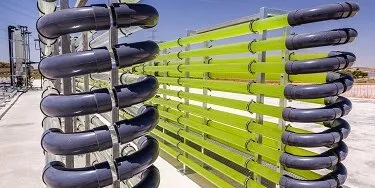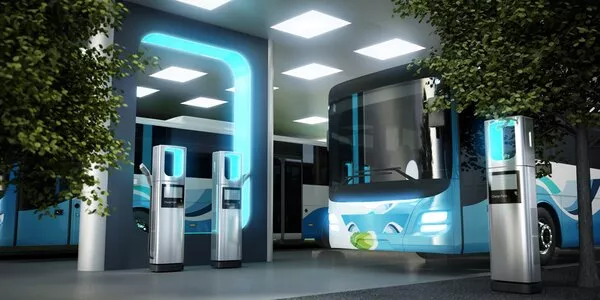
How Marubeni is using sun and wind to power Asia’s energy transition
Marubeni sponsored two first-of-a-kind renewable energy projects, including an offshore windfarm in Japan and a floating solar project in Taiwan, expanding its renewable energy generation business and contributing to energy transition in the region.
Asia is embracing renewable energy as governments around the region seek to play their part in global efforts to meet the climate change target of the 2015 Paris Agreement. Japan has commissioned its first large-scale commercial offshore windfarm project, while Taiwan is building on its successes with offshore wind power and ground-mounted solar by adding a new asset class, floating solar, to its energy mix.
Japan’s Marubeni Corporation is the sponsor of both the groundbreaking Akita offshore windfarm project in Japan and the Changhua floating solar project in Taiwan, which serve excellent examples to meet its sustainability agenda. Marubeni is expanding its portfolio in the renewable energy business, aiming to grow green revenue from ¥700 billion in FY 2017 to ¥1.3 trillion by FY 2023 1.

Societe Generale has been working alongside Marubeni on these two pioneering projects. Not only supporting Marubeni to transform its power generation portfolio by expanding its renewable energy generation business, but also confirming Societe Generale’s position as among Marubeni’s leading banking partners for renewable energy projects across Asia.
Marubeni Corporation is Japan's fifth-largest trading company by assets with a diverse range of business activities including energy sector in Japan and overseas. Having a strong track record in over 42 gigawatts (GW) of global Independent Power Projects (IPPs), the company is one of the top players active in energy solution and power services.
These projects are at the forefront of a broader shift towards renewable energy in Asia. We are pleased to partner with Societe Generale on these exciting projects, capitalising on its market-leading expertise in Asian renewable energy.
Contributing To Energy Transition
Marubeni has outlined its ambition to transform its power generation portfolio. It will cut its coal-fired power generation in half by 2030 and strive to expand the ratio of power that it generates from renewable sources from approximately 10 per cent to 20 per cent by 20232 .
Supporting Policy Goals
Policymakers across the region set increasingly ambitious targets for clean electricity generation. Japan aims to reduce greenhouse gas (GHG) emissions by 26 per cent from its 2013 levels and increase the contribution of renewables to its energy mix from 16 per cent in 2017 to 22-24 per cent by 20303. As one of the lead sponsors of a project to construct, operate and maintain offshore windfarms at Akita Port and Noshiro Port in the country’s northwestern Akita Prefecture, Marubeni is helping to deliver on these goals.

This JPY100 billion (EUR847 million) project is the first large-scale commercial offshore windfarm in Japan. Scheduled to begin operations in 20224, Akita is expected to generate 140 megawatts (MW) of electricity, enough to serve the needs of around 47,000 households5 .
According to the Japan Wind Power Association, Japan can take advantage of the power potential of offshore wind on its 29,751 kilometre-long coastline to drive the country’s energy transition as well as boost its economy. It is estimated that offshore wind could create direct investment of ¥5-6 trillion, generate 80,000-90,000 new jobs and cut 71 million tons from Japan’s carbon emissions by 20306 .
Taiwan also passed legislation in 2017 that requires energy from renewable sources to rise from around 4 per cent of total electricity generation capacity to 20 per cent by 20257. The government’s New Energy Policy envisages that Taiwan will aim to install 27 GW of renewable capacity, including 20 GW of solar photovoltaic (PV) capacity, by 20258.
Changhua is a 181 MW solar photovoltaic floating project located in an inter-tidal area on the Western coast of Taiwan. This project is already under construction with expected completion by the end of 2020. It is one of the largest floating solar energy projects in the world, the first industry scale floating solar project in Taiwan and the first floating solar project financed by Societe Generale.

Floating solar projects like Changhua offer a number of advantages. They can provide a better energy yield because water has a cooling effect on the panels and they also overcome land constraints associated with the traditional solar power plant installations. Floating solar is an asset class for which Asia is likely to play a leading role globally.
There is a growing commitment across the region towards reducing the share of fossil fuels in the overall energy mix and reducing the greenhouse gas emissions that are accelerating climate change. Marubeni, as the largest sponsor of these projects, shares this commitment and is striving to be a leader in the renewable energy generation business, which we believe benefits the economy and society as well as the environment.
Financing A Sustainable Future
Societe Generale is the only non-Japanese bank involved in financing the Akita offshore windfarm project, which will serve as a template for the future development of the sector: as of January 2020, 14.8GW of offshore wind projects are in the Environment Impact Assessment (EIA) pipeline9 with a tender expected to be launched in the second half of the year by the Japanese authorities.
The bank acted as Mandated Lead Arranger, Technical Bank and Hedge Provider for the NT$7.3 billion (EUR 223 million) project financing for the Changhua floating solar project in Taiwan, have already been involved with all four of the offshore wind project financings completed in Taiwan so far.
Thanks to Marubeni’s trust in us, we can build a better and sustainable future together. We are proud to be among Marubeni’s leading banking partners for these first-of-a-kind Asian offshore wind and floating solar projects, which will play an increasingly important part in delivering clean energy to the region over the years ahead. Our ability to meet the full spectrum of a renewable project’s needs, from rendering advisory services to providing funding and risk management solutions, and our deep experience in this sector put us in an exceptional position to help clients that are delivering Asia’s energy transition.
1- https://www.marubeni.com/en/sustainability/group/session/pdf/2019mar.pdf
2- https://www.marubeni.com/en/news/2018/release/00028.html
3- https://www.enecho.meti.go.jp/en/category/special/article/energyissue2019_01.html
4- https://www.marubeni.com/en/news/2020/release/20200203E.pdf
5- https://www.japantimes.co.jp/news/2020/02/04/business/marubeni-japan-first-large-scale-offshore-wind-power-business/#.XqJO3MsUnIU
6- https://gwec.net/gwec-and-jwpa-launch-joint-task-force-to-drive-offshore-wind-growth-in-japan/
7- https://www.moeaboe.gov.tw/ECW_WEBPAGE/FlipBook/2018EnergyStaHandBook/index.html#p=141
8- https://www.wartsila.com/docs/default-source/power-plants-documents/downloads/white-papers/asia-australia-middle-east/optimal-path-for-greater-use-of-renewable-energy-in-taiwan.pdf
9- https://gwec.net/global-wind-report-2019/



